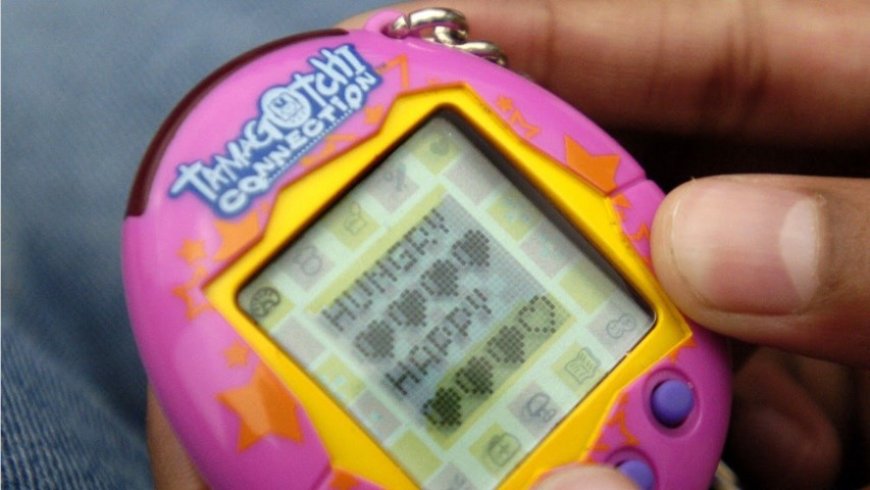NostalTech: Tamagotchi
Let's explore the history and popularity of Tamagotchi, a digital pet simulator toy from the 90s.

The Tamagotchi was invented by Aki Maita and developed by Akihiro Yokoi in 1996, during a time when flashy neon toys and cheesy pop music were all the rage. The idea for the Tamagotchi came to Yokoi after seeing a commercial on TV where a boy was trying to bring his pet turtle along with him on a trip.
Despite its simplicity, the Tamagotchi was a huge hit and sold 10 million units in less than a year after its release. Bandai, the manufacturer of the Tamagotchi, had to ramp up production to 3 million units a month just to keep up with the insane demand for the toy. Even adults were raising Tamagotchis, with reports of Japanese businesswomen canceling meetings to make sure they could care for their pets. When Tamagotchi was released in the US in May 1997, it sold over 3.5 million units in just a month, making it a massive success.
The Tamagotchi is a small alien species that the user can raise by feeding it, letting it play games, and cleaning up its excrement. The gameplay on the Tamagotchi varies between different models, some having more interactive play than others. The Tamagotchi starts as an egg and then enters a life cycle starting as a baby, then becoming a child, teenager, adult, and sometimes even an elderly stage.
The Tamagotchi and its games, the toy was addicting and popular. The hunger meter, happy meter, and training meter all deplete just like in real life, and users care more about the happiness of their Tamagotchi than their own well-being. The Tamagotchi's evolution is straightforward, and if not cared for correctly, it can die. The standard life expectancy of a Tamagotchi can vary, and if not cared for, it can perish of old age, starvation, or disease from feces buildup.
When the Tamagotchi gets sick, you have to do an extreme video game combo, which consists of hovering over the medicine icon and pressing a button. If a Tamagotchi passes to another plane of existence, you can just reset and get a new one. Some of them seem to want to leave you within 24 hours, so resetting is a common mechanic.
The design of Tamagotchi is very adorable and minimalist, and the eggshells themselves often have these wacky colorful 90s looking designs. There were a lot of different shell designs, some of which were released only in certain countries, and many of which are rare and valuable today.
The characters themselves are the big selling points, though, and each pet that hatches from the egg is unique. Some of the most iconic and original Tamagotchi designs include Mamechi, Kuchipachi, Mimici, Kinjirochi, Tamachi, and Bill. Everyone has their own personal favorite, but Mamechi is particularly popular due to her cute and cuddly appearance.
The original Tamagotchi went through about a year of testing and development, during which time it was going to be a wristwatch before becoming the classic keychain. Interestingly, the same pair that made Tamagotchi actually went on to create Digimon, which has a very similar concept but is a little less cute and more shonen.
In the modern era, newer designs for Tamagotchi are a little more high-tech, such as the Tamagotchi Pix, which lets you take pictures with your Tamagotchi. There are also spin-off Tamagotchis like R2D2 Tamagotchi or Pac-Man Tamagotchi, but they lack the original unique charm that the Tamagotchis of old were all about.The Tamagotchi is still being printed today, and there are still many fans of this classic toy. There is a definitive tier list for the characters, but everyone has their own personal favorite.
In conclusion, the Tamagotchi was a toy that captured the hearts of many, both young and old. Despite its simplicity and rudimentary games, it was popular because it allowed users to care for a digital pet and experience the joys and responsibilities of pet ownership without the actual upkeep of a real pet. The Tamagotchi is a nostalgic toy for many, and it remains a testament to the popularity of digital entertainment and its enduring appeal.







